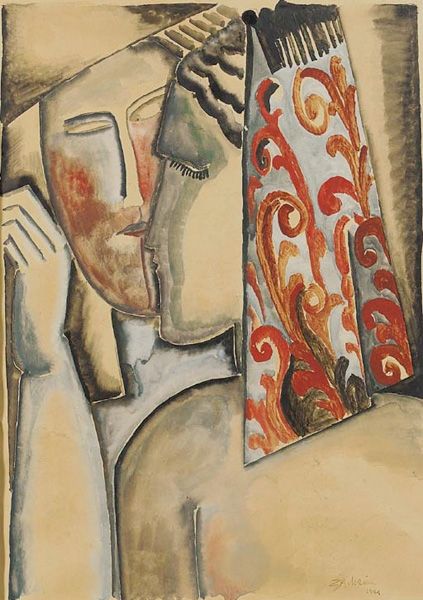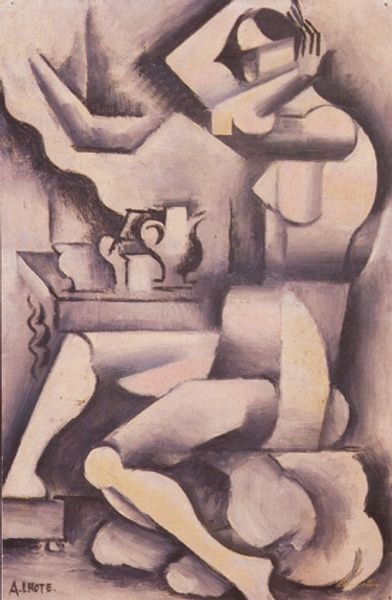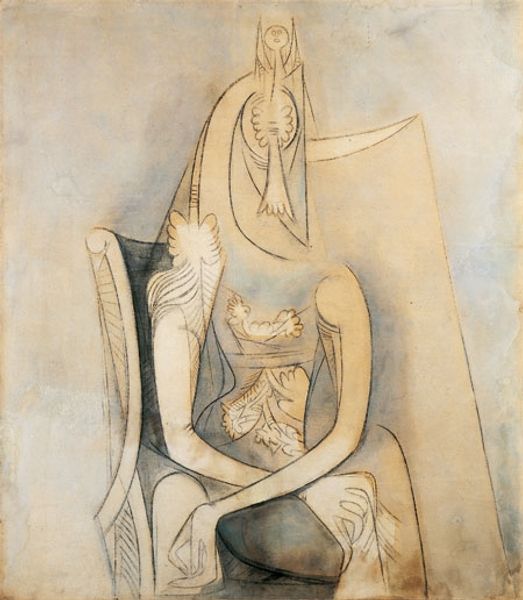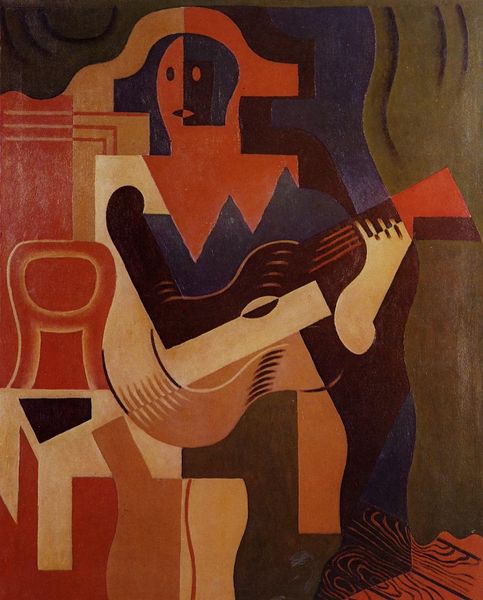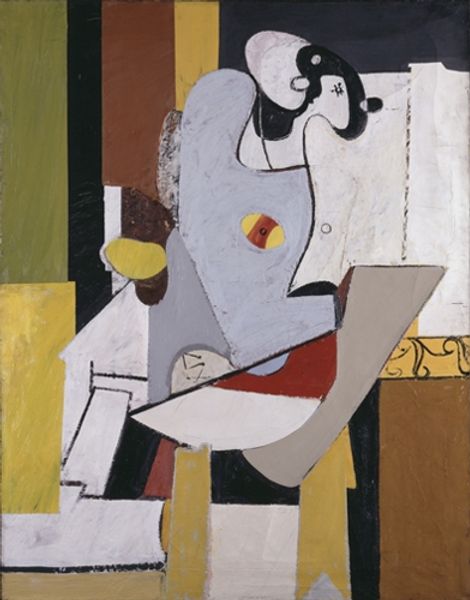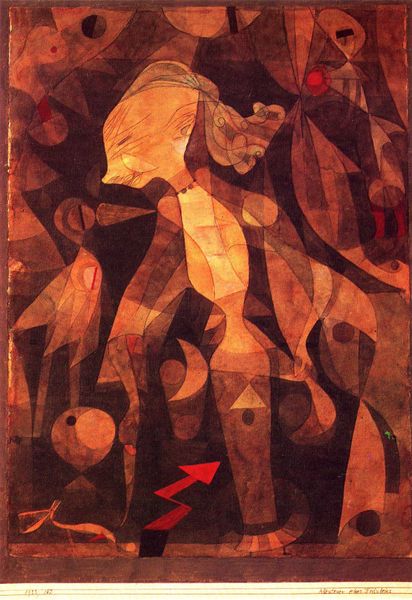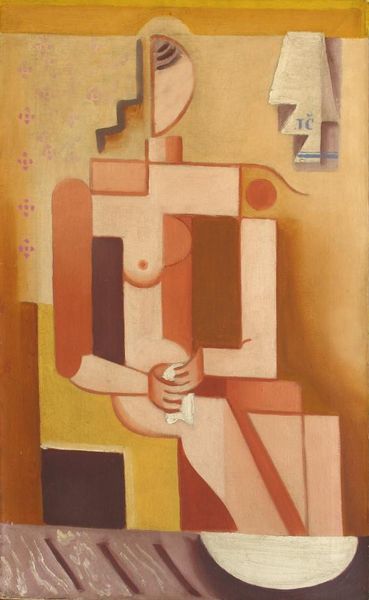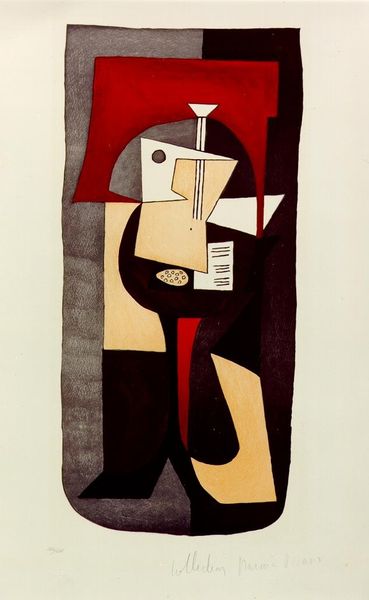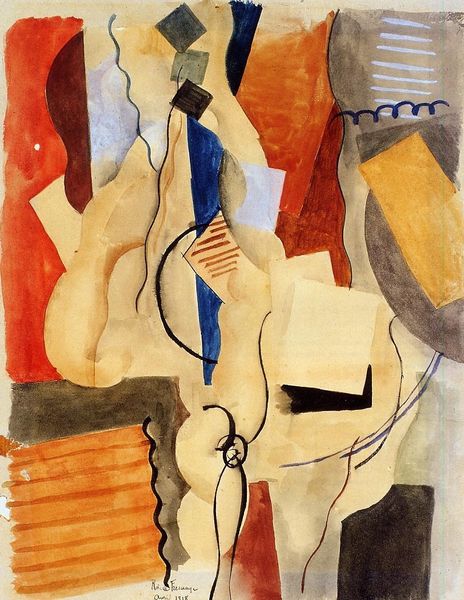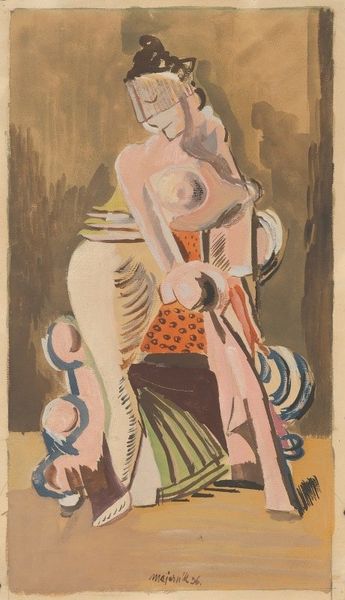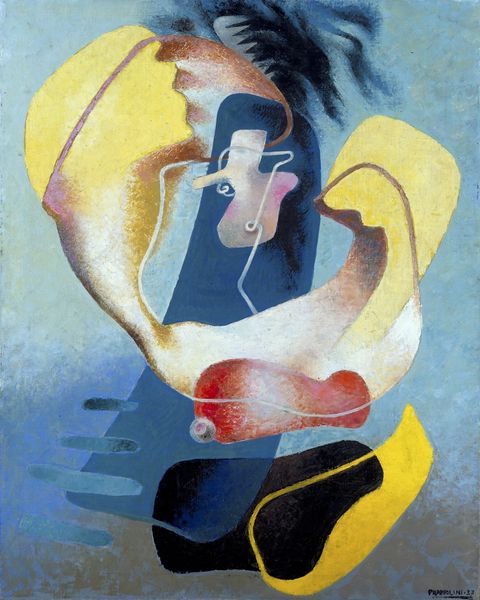
painting, oil-paint
#
portrait
#
cubism
#
painting
#
oil-paint
#
oil painting
#
intimism
#
watercolour illustration
#
nude
#
modernism
#
watercolor
Copyright: Zadkine Research Center (displayed with the permission of Zadkine Research Center)
Editor: This is "Three Women in an Interior," painted by Ossip Zadkine in 1927, using oil paint. I'm struck by how the figures blend into the background, and their forms feel both present and fragmented at the same time. What's your interpretation of this piece? Curator: Zadkine's work exists at an exciting intersection. Think about 1927: the roaring twenties, shifts in gender roles, the burgeoning interest in psychoanalysis. The figures here, especially given their almost merged forms, seem to reflect the blurring of individual identity within societal expectations placed on women during this period. What power dynamics do you see at play, considering their poses and interactions within the enclosed space? Editor: I notice how the central figure seems to be presented, almost revealed, while the other two are positioned around her, as if guarding or maybe even judging. Curator: Precisely! Consider the influence of cubism here. It’s not merely aesthetic; it’s a method of deconstructing traditional representations of femininity. Are they complicit in each other’s objectification, or are they actively renegotiating the space and defining themselves outside male gazes? How does their interior world reflect the exterior pressures they face? Editor: It’s fascinating to think about the women collectively rather than individually, fighting for definition. The fractured figures become almost symbolic of fractured identity. Curator: And what does intimacy mean under duress? Can it even be an affirming experience when the world demands uniformity? Consider their gazes averted – where do we find solace and identity in art when considering these pressures of conformity? Editor: I see the painting very differently now, less as a depiction of nude women and more as a powerful statement about the social pressures of the time. Thank you. Curator: It’s about placing it in its social fabric. I hope this conversation has given you a taste of that.
Comments
No comments
Be the first to comment and join the conversation on the ultimate creative platform.
